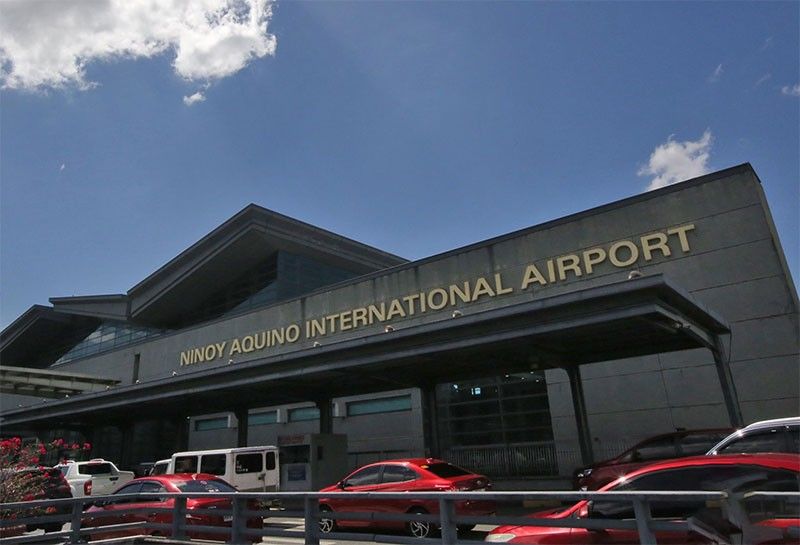Better NAIA


Less than four months after taking over the management and operations of the Ninoy Aquino International Airport (NAIA), the private sector consortium New NAIA Infra Corp. or NNIC has done more than what the government has accomplished for the country’s premier gateway for many decades.
The privatization of NAIA could not have come at a better time since the Manila-based airport is gearing up for increasing number of passengers and flights in the years to come.
Already, NAIA has achieved its highest-ever passenger and flight numbers last year, signaling the growing strength and potential of air travel in the Philippines.
According to recent reports, NAIA handled 50.1 million passengers in 2024, up by 5.1 percent from its previous high in 2019 before the pandemic and 10.4 percent more than in 2023. The airport also recorded 293,488 flights, an 8.1-percent increase compared to 2019 and 4.8 percent higher compared to 2023.
NNIC president Ramon Ang saidthat more Filipinos are flying and more visitors are coming to the Philippines and this growth is a clear sign that confidence in air travel has returned.
The company pointed out that the numbers highlight the country’s recovery as a travel destination and its growing role in tourism and trade in the region. Since NNIC took over in September 2024, the airport has steadily managed increasing passenger volumes while introducing operational improvements.
During the peak holiday travel period from Dec. 30 to Jan. 1, the airport recorded an average on-time performance (OTP) of 83.36 percent with a high of 88.35 percent on Dec. 31, the highest OTP at NAIA since NNIC began managing the airport.
NNIC said that for 2025, its focus will be on further improving infrastructure and streamlining operations to keep up with increasing passenger demand, with the goal of transforming NAIA into a modern and efficient airport that can support the country’s goals for tourism and economic growth.
What are the best improvements introduced so far at NAIA in the three months that NNIC has been at the helm? NNIC has listed some.
• New OFW lounge at T3 completed with free food; OFWs will also have their dedicated immigration counters like first-class passengers
• Stable and reliable power in partnership with Meralco, which is also putting in placed a dedicated substation for NAIA
• A new centralized transportation hub at T3 to reduce congestion, where all ride-hailing services now have a dedicated area at the multipurpose parking building. There will be 401 parking slots, 18 loading bays, dedicated lanes, and multiple entry and exit points, with Grab, JoyRide and Angkas’ upcoming car sevice already onboard. This will be replicated across all terminals
• Road widening around NAIA to ease traffic congestion
• Expansion of curbside areas, with Terminals 1, 2 and 3 now having wider loading and unloading bays making it easier for passengers to get in and out of the airport and helping traffic flow smoothly
• Improved and timely maintenance of equipment and facilities, new airconditioning units at all terminals, the number of passenger boarding bridges increased with six designed for wide-body aircraft reopened, two passengers boarding bridge have been converted into swing gates at T3, 500 sets of gang chairs installed and 2,500 brand new baggage trolleys deployed
• Safety upgrade and renovations at T4 which is the oldest terminal primarily used by budget carriers
• Faster free wifi with help from PLDT, Smart and Converge, boosting internet speed from as low as two mbps to as high as 115 mbps with up to three hours of free wifi use
• Streamlining of VIP services, which will be complimentary only for dignitaries and officials with critical function while rates for public use were adjusted to discourage general use and authorized NNIC personnel being the only one who can extend VIP assistance. For seniors, PWDs, medical passengers, dedicated services remain in place
• New employees dining hall at T3 capable of accommodating 180 employees with another one being built at T1
• More parking spaces after NNIC rationalized parking rates, freeing up 1,800 much-needed spaces across all terminals
As pointed out by NNIC, modernizing NAIA won’t happen overnight but these changes show what’s possible working together.
In addition to these, a new explosive detection system has been installed while a “fly to gate” biometric boarding system is currently being developed. NNIC is also collaborating with the airline companies for efficient terminal assignments in 2025.
And the government has already reaped huge financial benefits and will continue to do so, funds that can be allocated for more and better services for its citizens. Aside from the P30 billion upfront payment already made by NNIC, there will be P1.5 billion in annuity payments to made covering the period September 2024 to June 2025. Aside from that, 82.2 percent of all revenues, except passenger service fees, will go to the government. In addition, around P420 million has been paid for the signing bonuses and financial assistance of absorbed Manila International Airport Authority (MIAA) and LServ personnel. MIAA used to manage NAIA but continues as a regulator.
Government stands to gain about P1 trillion in revenues from its public-private partnership with NNIC over the 25-year concession period.
Recognizing the persistent, years-long issues with T3’s baggage handling system, NNIC has already ordered a new, modern system with redundancy measures to replace the outdated, 21-year old equipment to be installed this year.
NNIC has committed to spend P170-billion to execute its phased but ambitious plan to elevate NAIA to world-class standards. This includes plans to increase passenger capacity from 43 million to 62 million annually and air traffic movements from 42 to 48 per hour.
Within three years, passengers and the public can expect runway improvements, increased terminal capacity, improved commercial spaces, better traffic flow and a direct link from T3 to the Skyway system.
For the long-term, plans include the construction of a new terminal building to accommodate an additional 35 million passengers annually, flood mitigation in surrounding areas and linkage to the Metro Manila Subway.
We need a better gateway and that’s a fact to support our economic growth. Passengers and airline companies and other users of NAIA may have to shell out a little more but c’mon, nothing comes for free. We pay so much taxes to the government, both national and local, but hardly do we feel the benefits. People used to cringe at the idea of paying for the use of tollways but look at what Skyway Stage 3, NAIA X, Harbor Link Expressway, Cavitex, TPLEX have done for us, being able to reach far-away places in a matter of minutes.
A dole-out mentality will not do us any good.
For comments, email at [email protected].
- Latest
- Trending






























